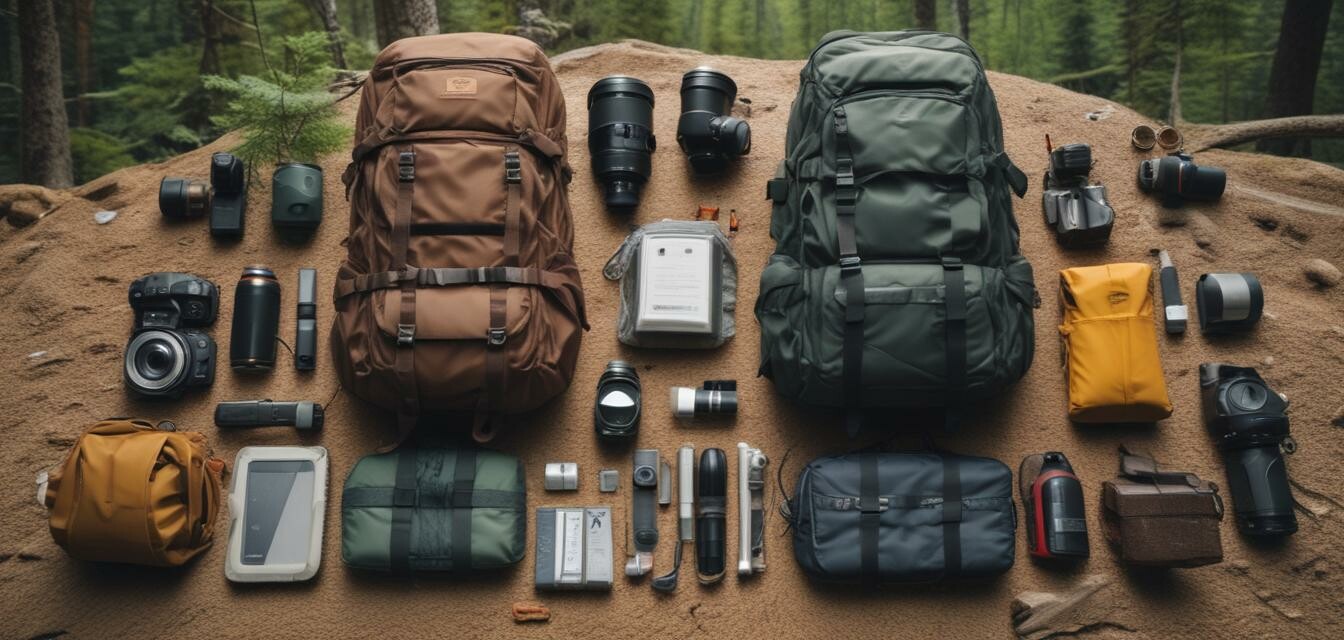
Ultimate Packing List for a Backpacking Weekend
Key Takeaways
- Start with essential gear for comfort and safety.
- Pack clothes suitable for varying weather and activities.
- Consider lightweight options to minimize your load.
- Keep your backpack organized for easy access.
- Use the right backpack, such as Dakine backpacks, designed for outdoor adventures.
Planning a weekend backpacking trip? Packing smartly can enhance your experience, ensuring you have everything you need while minimizing weight. Below, we’ve compiled a comprehensive packing list that includes all the essentials you’ll need to make your adventure a success.
Essential Gear
Your packing list begins with the essential gear. Prioritizing these items ensures safety and comfort on your trip.
| Item | Purpose |
|---|---|
| Backpack | To carry your gear comfortably. Consider Dakine backpacks for durability and design. |
| Tent | Provides shelter from the elements. |
| Sleeping bag | Keeps you warm during the night. |
| Sleeping pad | Offers insulation and comfort while sleeping. |
| First aid kit | For any medical emergencies. |
| Headlamp/Flashlight | Essential for navigating after dark. |
| Multi-tool | Useful for various tasks around the campsite. |
Clothing Essentials
Clothing should be both suitable for the environment and comfortable. Here's what to bring:
- Moisture-wicking t-shirts
- Insulating layers (fleece or down jacket)
- Waterproof jacket
- Hiking pants or shorts
- Hiking boots or shoes
- Wool socks
- Hat and gloves (if needed)
- Extra underwear
Food and Cooking Supplies
Eating well during your trip is vital, so plan your meals accordingly:
| Item | Purpose |
|---|---|
| Portable stove | For cooking meals. |
| Fuel for stove | To power your cooking stove. |
| Cookware (pot/pan) | For meal preparation. |
| Utensils | For serving and eating meals. |
| Food | Plan easy meals; consider freeze-dried options. |
| Snacks | High-energy snacks for the trail. |
| Water purifier or filter | To ensure safe drinking water. |
Safety and Navigation
Safety should never be overlooked. Pack the following items:
- Map and compass
- Emergency whistle
- Fire starter (matches/lighter)
- Sunscreen and lip balm
- Insect repellent
- Your identification and permits (if required)
Personal Items
Don't forget to pack some personal items for comfort:
- Toiletries (biodegradable soap, toothbrush, etc.)
- Trash bags (Leave No Trace principles)
- Travel towel
- Camera or smartphone for capturing memories
- A book or journal
Extras to Consider
Additional items that could enhance your experience:
- Camping chair
- Binoculars for wildlife watching
- Portable charger for electronics
- Small games for downtime
- Lightweight hammock for relaxing
Packing Tips
To maximize your backpacking experience, try these packing tips:
Tips for Packing Efficiently
- Use packing cubes or stuff sacks for organization.
- Place heavier items closer to your back for better balance.
- Always pack the items you need most frequently towards the top.
- Consider compressing gear to save space.
- Use a checklist to ensure you don’t forget any essential items.
Pros
- Efficient packing saves time and energy.
- Being well-prepared enhances your overall experience.
- Using a checklist reduces the chance of forgetfulness.
Cons
- Overpacking can add unnecessary weight.
- Not every item may be relevant to every trip.
Conclusion
Packing for a weekend backpacking adventure can be straightforward if planned well. Focus on essentials, remain flexible, and tailor your packing list based on the specific needs of your trip. Explore more about the appropriate Casual Daypacks or check out our Buying Guides to help you choose the right backpack.